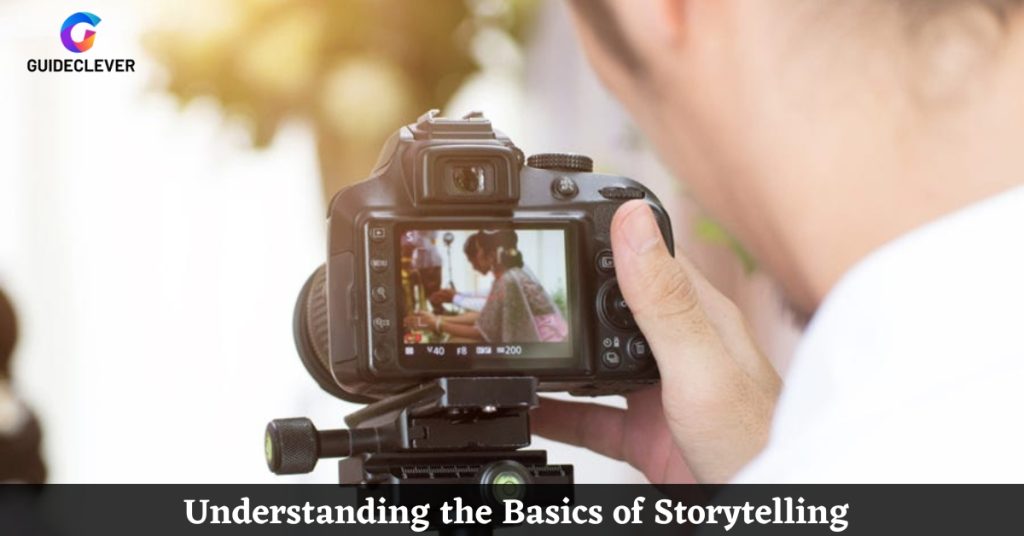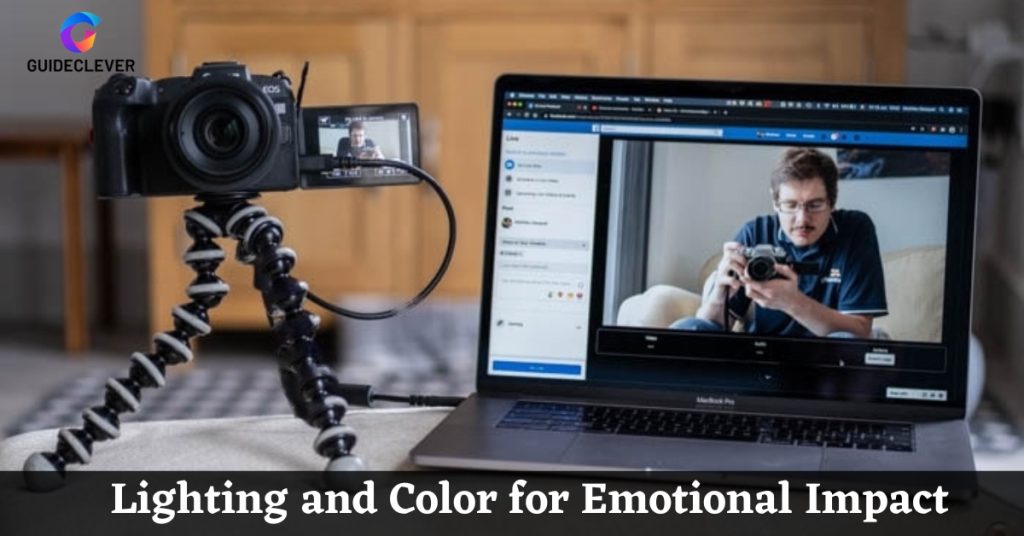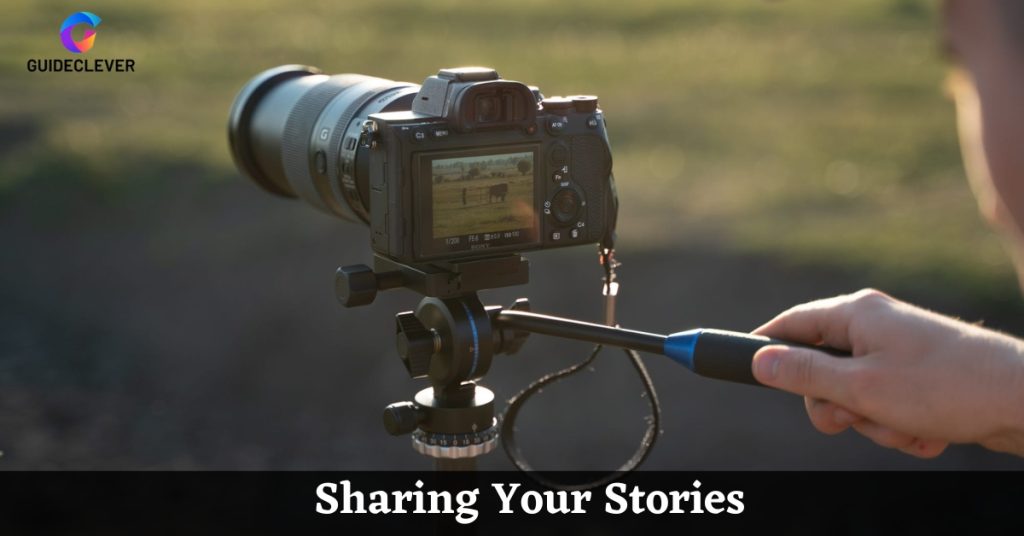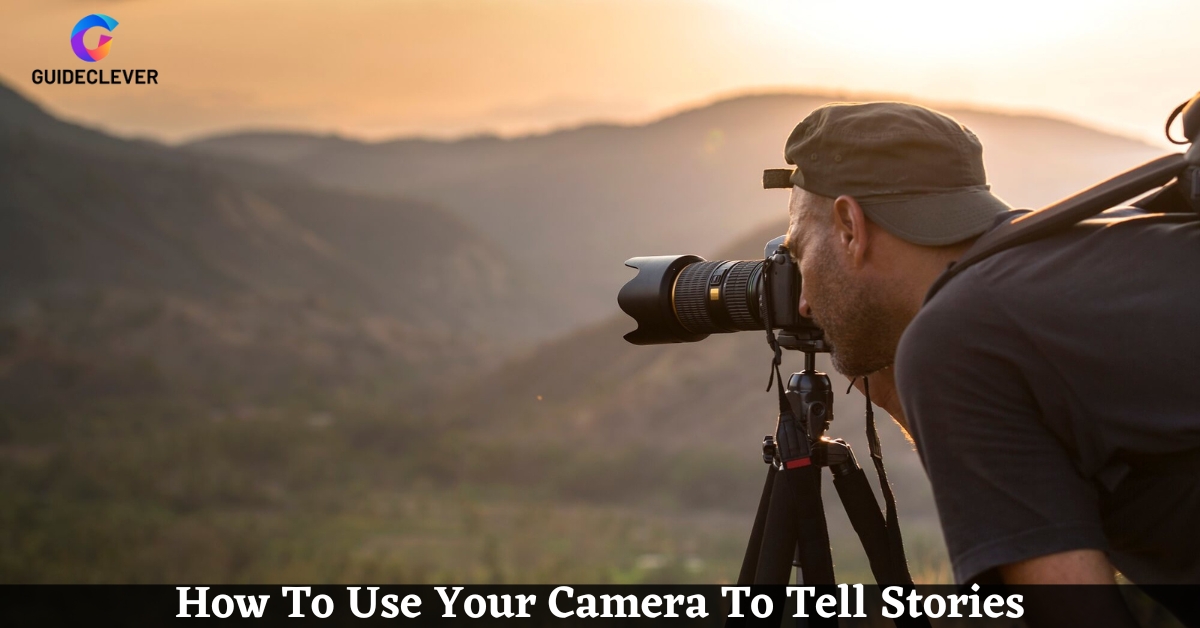Visual storytelling is a powerful way to communicate using pictures. By using a camera as a tool, we can create stories that touch people’s hearts. And make them feel something special. This guide will show you how to use your camera to tell stories. You’ll learn about the basics of storytelling, camera settings, and composition techniques. Lighting, editing, and sharing your stories with others.
By the end of this guide, you’ll have the knowledge and skills to use your camera in an exciting and creative way. Whether you want to be a filmmaker or a photographer, this guide will help you bring your stories to life.
Get ready to embark on a fun journey where you’ll learn how to use your camera to tell amazing stories. Let your creativity shine and make your pictures speak volumes!
Contents
Understanding the Basics of Storytelling

Defining Storytelling in a visual context
Storytelling means using pictures to tell stories. When we take pictures with a camera, we can tell stories that make people feel something special.
Identifying key elements of a compelling story
To make a story interesting, we need important things like a clear plot (what happens in the story). Characters that we care about, problems, solutions, and emotions that touch our hearts. These things make stories exciting and memorable.
Exploring different storytelling techniques
There are many ways to tell stories with a camera. We can show the whole scene to set the stage and zoom in on important details. Put contrasting things together. Use pictures to represent ideas, and show pictures in a specific order. These techniques help make our stories more exciting and meaningful. Let’s start our storytelling adventure! We have discussed Cameras Vs Security Systems in another post.
Preparing for a Storytelling Shoot
Understanding the Technical Aspects of Your Camera
1. Camera modes: Auto vs. Manual
Know the different camera modes like Auto (when the camera does everything for you). and Manual (when you control all the settings) to tell better stories with your camera.
2. Aperture, Shutter Speed, and ISO
Learn about aperture (how much of the picture is in focus). shutter speed (how long the shutter is open). and ISO (how sensitive the camera is to light). to create different effects in your storytelling.
Choosing the Right Camera Equipment for Storytelling
1. Lens Selection and Focal Length Considerations
Understand how different lenses capture different shots. Wide-angle lenses show more, while telephoto lenses bring faraway things closer. Choose the right lens for your storytelling needs.
2. Other Essential Accessories
Tripods keep your camera steady, and filters change the light or add effects. These accessories can enhance your storytelling. Learn how and when to use them.
Let’s explore these skills to improve your storytelling abilities!
Composition and Framing Techniques
Rule of Thirds and Other Compositional Guidelines
Learn how to use the rule of thirds to place your subject in a balanced way. And discover other techniques like symmetry. Framing, and negative space to make your pictures interesting.
Using Leading Lines to Create Depth and Guide the Viewer’s Eye
Find out how to use lines in your pictures, like roads or rivers. To make your images look deep and help viewers focus on what you want them to see.
Understanding Perspective and Its Impact on Storytelling
Understand how different angles and viewpoints can change. The way a picture looks and how it tells a story.
Incorporating Visual Elements to Enhance Storytelling
Learn how colors, textures, patterns, and contrasts can make your pictures more exciting. And help tell your story in a stronger way.
Lighting and Color for Emotional Impact

Utilizing Natural Light Effectively
Learn how to use sunlight in your pictures to make them more emotional and interesting.
Introduction to Artificial Lighting Techniques
Discover how to use artificial lights, like lamps or flashes. To create different moods in your storytelling.
Exploring Color Psychology and Its Role in Storytelling
Understand how colors can make people feel certain emotions and how to use them in your pictures.
Creating Mood and Atmosphere through Lighting and Color Choices
Find out how to use light and color to make your pictures look. And feel a certain way, creating a special atmosphere.
By learning about lighting and color, and using them effectively. You can make your storytelling more powerful and engaging. Let’s explore these techniques together! We have talked about How to Program a Trail Camera in a different post.
Capturing Moments and Emotions
The Art of Candid Photography
Discover the magic of candid photography. Where you capture real moments without people posing. Learn how to blend in and take pictures that show true emotions and interactions.
Portraying Emotions through Faces and Body Language
Explore how facial expressions. And body movements can show different feelings in your pictures. Learn to observe and capture these emotions to make your stories come alive.
Techniques for Capturing Important Moments in Stories
Learn how to take pictures at just the right moment to capture the most important parts of your story. Find out how to freeze action, show movement, and wait for the perfect time to create amazing images.
Let’s start capturing unforgettable moments and emotions with your camera!
Editing and Post-Processing
Choosing the Right Software for Editing
Find the best software to edit your pictures and make them look even better.
Enhancing Storytelling through Editing Techniques
Learn editing tricks to make your stories more interesting and exciting.
1. Color Grading and Adjustments
Change the colors and tones in your pictures to create different moods and feelings. Try out different color combinations to make your stories come alive.
2. Cropping and Framing for Impact
Cut out unnecessary parts and focus on the important elements in your pictures. Experiment with different ways to frame your subjects for a stronger impact.
Adding Music and Sound Effects to Tell Stories
Include music and sound effects that match the mood and atmosphere of your story. This will make your storytelling more engaging and enjoyable.
Sharing Your Stories

Choosing the Right Platform for Storytelling
Find the best place to share your stories online that matches your style and the people you want to reach.
Using Social Media and Online Communities
Learn how to use social media and online groups to share your stories with more people. Connect with others who love storytelling just like you!
Talking to Your Audience and Getting Feedback
Interact with your audience by responding to their comments and messages. Ask for feedback on your stories to make them even better. Let’s explore the world of sharing and connecting through storytelling together!
Conclusion
To sum up, remember what you’ve learned about using your camera to tell stories. Practice and try new techniques to improve your storytelling skills. Visual storytelling can have a big impact in different situations. Such as sharing personal stories. Or capturing important moments. Your camera is a powerful tool to express emotions. And share experiences. Keep exploring and sharing your unique perspective through storytelling. Hope you understand how to use your camera to tell stories in this post. Have fun telling stories with your camera!


